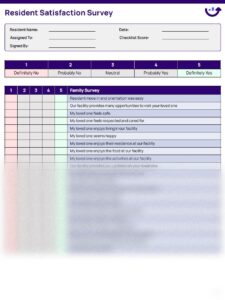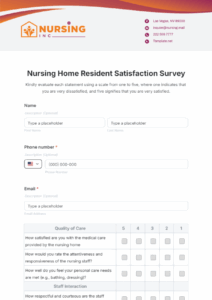Understanding the pulse of a community begins with knowing its people, and nothing reveals more about a community’s true potential than a thorough understanding of its residents’ skills. Imagine a barangay where every talent is known, every skill is recognized, and every resident’s contribution can be maximized for collective growth. This isn’t just an idealistic vision; it’s a practical goal achievable through strategic planning, and at its heart lies an effective barangay skills mapping survey template.

Such a template is more than just a questionnaire; it’s a vital tool for local governance and community development. By systematically gathering data on the various abilities and expertise present within a barangay, leaders can make informed decisions, identify gaps, and design programs that truly meet the needs of their constituents. It helps in allocating resources efficiently, fostering local entrepreneurship, and even preparing for disaster response by identifying skilled individuals who can assist in various capacities.
Crafting an Impactful Skills Mapping Survey
Creating a skills mapping survey that genuinely captures the diverse talents within a barangay requires careful thought and a comprehensive approach. It’s not enough to simply ask “what can you do?”; the questions need to be structured to reveal both formal qualifications and practical, hands-on experience. The goal is to build a rich database that reflects the true human capital of the community. Think about the various sectors and everyday needs of a barangay, from construction and repair to arts and crafts, and even digital literacy.
A well-designed template should be easy to understand and fill out, even for those with limited formal education. Using clear, concise language and providing examples for different skill types can significantly improve the quality and accuracy of the responses. Remember, the effectiveness of the data collected hinges on how well the residents comprehend and engage with the survey. This means considering local dialects or common phrases where appropriate, without making the survey overly complex.
Furthermore, it’s crucial to explain the purpose of the survey to the respondents. When people understand that their participation contributes directly to community projects, training opportunities, or emergency preparedness, they are more likely to provide accurate and complete information. Transparency builds trust, which is essential for any community-led initiative. The survey isn’t just about extracting information; it’s about fostering a sense of participation and ownership among the residents.
Finally, consider the method of data collection. While traditional paper surveys are common, exploring digital options, if feasible, can significantly streamline the data processing and analysis. Regardless of the method, ensure that there’s a clear process for data input, storage, and analysis to transform raw data into actionable insights for barangay officials and community organizers. This organized approach ensures that the valuable information gathered doesn’t just sit idle but serves its intended purpose.
Essential Components of Your Template
- Basic Demographics: Name, age, gender, address, household composition. This helps in understanding the general profile of respondents.
- Educational Background: Highest educational attainment, vocational courses completed, certifications.
- Vocational and Technical Skills: Include a comprehensive list of trades like carpentry, plumbing, electrical work, welding, masonry, tailoring, cooking, farming, fishing, driving, caregiving, hairdressing, and auto mechanics. Provide space for “other” skills.
- Digital Literacy: Basic computer skills, internet usage, social media proficiency, graphic design, online selling.
- Soft Skills and Leadership: Communication, problem-solving, teamwork, leadership roles in organizations, event organizing.
- Interests and Aspirations: What new skills would they like to learn? What kind of training are they interested in? This helps identify training needs.
- Employment Status and Preferences: Current employment, desired employment type, availability for community projects.
Maximizing the Impact of Your Skills Mapping
Beyond merely having a robust barangay skills mapping survey template, the true power lies in how the collected data is utilized. A beautifully designed survey is only the first step; the subsequent processes of data analysis, dissemination, and practical application are what truly bring about tangible benefits for the barangay. It’s about transforming raw information into a dynamic resource that fuels community development and resilience.
Once the data is gathered, organize it in a searchable and easily accessible format. This could be a simple spreadsheet, a dedicated database, or even a visual map that highlights concentrations of certain skills in specific areas. The goal is to make it easy for barangay officials or community project managers to identify individuals with the specific skills needed for upcoming initiatives, whether it’s building a new community center, organizing a local clean-up drive, or responding to a natural calamity.
Consider establishing a “skills bank” or a talent registry within the barangay office. This registry can serve as a living document, regularly updated and referenced for various community activities. When a new project arises, instead of looking outside, the barangay can first check its internal talent pool, fostering self-reliance and empowering local residents to contribute directly to their community’s progress. This also helps in creating local employment opportunities and reducing reliance on external contractors.
Finally, the insights gained from the skills mapping should directly inform policy and program development. If the survey reveals a high concentration of out-of-school youth with an interest in digital skills, the barangay could organize free computer literacy workshops. If there’s a shortage of trained first-aiders, emergency response training could be prioritized. The data provides a clear roadmap for investment in human capital, ensuring that development efforts are targeted, relevant, and impactful for the entire community.
By embracing a systematic approach to identifying and leveraging the human capital within a barangay, local leaders can unlock incredible potential. A well-executed barangay skills mapping survey template is foundational to this process, allowing communities to move from simply knowing their residents to truly empowering them. This strategic understanding of local capabilities not only fosters self-reliance and resilience but also paves the way for a more vibrant, productive, and inclusive community where everyone has a role to play and every skill is valued.


